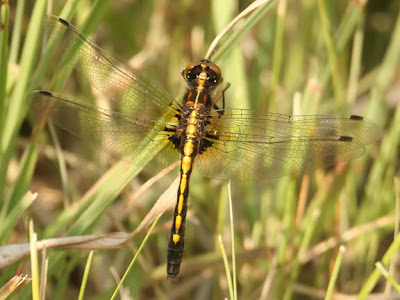
Wapiti is a Native American name for elk. It was derived from the Shawnee and Cree word
waapiti which means white rump. When the
Europeans came to North America there was an estimated population of over ten million wapiti. Even though there were relatives of the wapiti in Europe called red deer, the settlers called them elk, which is a common name for moose in Europe, because of their large size. As with many other large ungulates hunting and habitat loss created a large decline in their population. Wapiti were
eliminated from the Eastern half of the continent, the eastern subspecies was declared extinct in 1880. The Merriam's subspecies, which live in the southwestern United States, was declared extinct in 1906. Fortunately with new hunting laws, the reintroduction of Rocky Mountain elk into areas that were the wapiti had been
extirpated, and the creation of National Parks and other wildlife areas, the over all elk population in the U.S. is estimated at over one million today.

The Wapiti is one of the largest members of the deer family, only the moose is larger in North America. It is believed that wapiti originated in an area called
Beringia that once connected North America and Asia. These ancestral elk migrated down into North America and Asia. There
descendants spread across Asia and North America and became one of the primary food sources for many of the larger predators, including grizzly bear, wolves and Native Americans. During most of the year males travel in small groups and are typically found at higher elevations. Females usually form larger herds which help protect and care for the young. In the fall, during the mating season which is called the rut, male wapiti split from their bachelors groups and begin to gather a group of females. The bulls are very protective of their harem and will let make an
eerie sound called a bugle to warn away other males. If another male does not head the warning it will often lead to a battle. The female wapiti have a very short estrus cycle. She is in the mood for only a day or two so the male has to take advantage when the opportunity presents itself. Males will mate with as many willing
females in the harem as possible. The gestation period of the elk is about 8 to 9 months. Typically wapiti in Yellowstone, where the photos above were taken, begin to start
calving around
Memorial Day. The female will leave the herd and try to find and isolated spot to have the calf. Calves are able to stand on the day that they are born however it takes about two weeks before they are strong enough to be able to run from a predator at which time mother and calf will rejoin the herd. Until the it is strong enough the calf will curl up and hide in vegetation if any danger is near while mother tries to lure the predator away. This calf was born in
Mammoth Springs in Yellowstone National Park, which is a good place to avoid predators.

 We have eight different types of asters growing out in the wild here in Minnesota. They include the silky, sky-blue, smooth blue, heath, Lindley's, aromatic, purple-stemmed and New England.
We have eight different types of asters growing out in the wild here in Minnesota. They include the silky, sky-blue, smooth blue, heath, Lindley's, aromatic, purple-stemmed and New England. All eight are native to the state. I believe that this one is the New England. I took this photo at the Carpenter Nature Center.
All eight are native to the state. I believe that this one is the New England. I took this photo at the Carpenter Nature Center.
















































